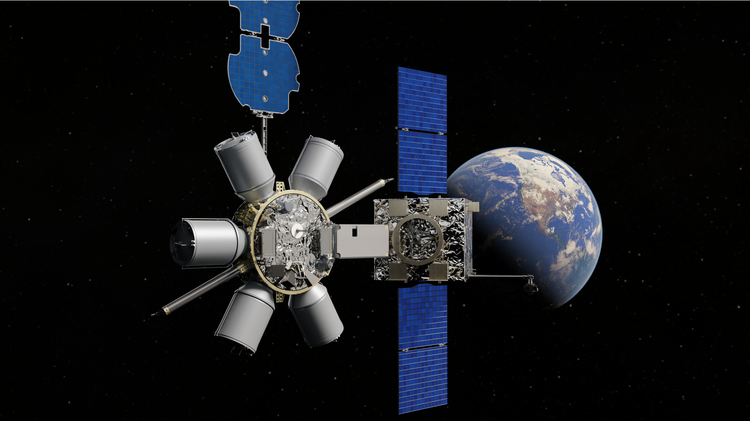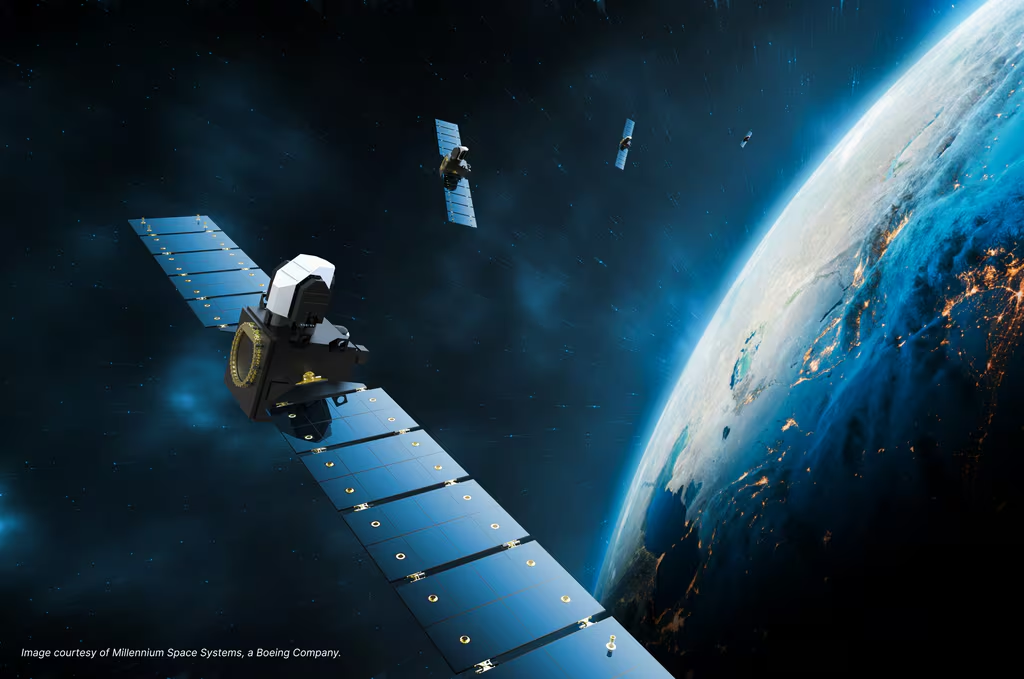Space Force’s next-gen space domain awareness satellites will require on-orbit refueling capability

NATIONAL HARBOR, Md. — The Space Force hopes to release a draft request for proposals by the end of 2025 for its new space domain awareness constellation — comprising satellites that can be refueled from space.
The RG-XX program aims to develop a network of space domain awareness platforms stationed in geosynchronous orbit (GEO) by leveraging commercially available technologies from multiple vendors. The constellation will eventually replace the service’s current Geosynchronous Space Situational Awareness Program (GSSAP) sats, which keep watch over objects of interest on orbit.
While RG-XX represents a key pivot in the Space Force’s acquisition strategy for big-ticket programs — namely the service’s decision to use commercial space vehicles and payloads — the constellation will also be the organization’s first next-gen constellation that includes a requirement for on-orbit refueling capabilities.
“It absolutely has to have a refueling requirement. I mandated that [and] was very militant about that, to be blunt, because U.S. Space Command has been very open about that desire,” Maj. Gen. Stephen Purdy, acting assistant secretary of the Air Force for acquisition and integration, told reporters Wednesday at AFA’s Air, Space and Cyber conference.
Spacecom leadership have made their interest in maneuverable satellites that can be refueled and repaired from space publicly known over the last few years. In response, the Space Force has previously allocated a small amount of funding for research and development of on-orbit refueling and other space-based logistics and mobility technologies, as well as experimented with those capabilities in space with Northrop Grumman and Astroscale US.
Purdy noted that budget constraints have inhibited the service from fully establishing a dedicated on-orbit refueling program, and so officials hope RG-XX will allow the Space Force to get its foot in the door.
However, the service’s acquisition strategy could present challenges related to the program’s refueling requirement in the future.
Following an acquisition decision memorandum issued by Purdy earlier this year, the Space Force conducted a review analyzing commercial options for RG-XX as a way to find faster and cheaper alternatives for what could have been a traditional, billion-dollar procurement program.
As a result, the service has since established a pool of commercial vendors for the program and plans to buy RG-XX satellites from multiple companies — with the intent to have the constellation be owned and operated by the Space Force, according to a report from Breaking Defense.
“The whole intent of the market for this contract will be multiple winners in the end game, and I will have multiple different competitors actually flying,” Purdy said. “As it turns out, they’re all probably going to fly different fuel, and so how do I refuel that? So now we’re thinking through that.”
One option could be requiring companies to bring their own refueling capability as part of their proposals, he noted. Another possibility the Space Force is considering is buying refueling services from the commercial industry instead.
Despite the potential challenges with refueling, Purdy emphasized that the requirement will make it easier for the Space Force in the long term to maintain the RG-XX constellation.
“It’s too easy to say, ‘Hey, they’re gonna be really cheap, and I can just launch more cheap birds.’ The reality is, it’s gonna take me a number of years to POM for that, and then I have a number of years to build for that, and it would have been a lot faster if I just had a refueler up there to refuel it,” he said, referring to the five-year Program Objective Memorandum process that outlines how funding will be allocated to a specific defense program.
After it releases the draft RFP for RG-XX later this year, Purdy said the Space Force will review the proposals and wait for future budget decisions to see how many satellites it will buy.
“My intent, bluntly, is just to buy as many as possible. I think this is clearly a mission need, where we need a lot as rapidly as possible, and that’s my mainline goal,” he said.






